#fairy poetry
Text

The Fairies : A Child’s Song by William Allingham
1883
Artist : Emily Gertrude Thomson
#emily gertrude thomson#william allingham#1883#fairy poetry#children's literature#children's book#old illustration#children’s poetry
478 notes
·
View notes
Text
A fantasy read-list: B-1
Part B: The First Classical Fantasy
1) On one side, the British Isles...
We looked at the most ancient roots of the fantasy genre, which are... well, literaly antique roots - the texts of the Antiquity, the myths and mythologies of the world, the legends of the so-called “pagans” and the tales of long-gone societies, cultures and civilizations. Plus the true, literal “medieval fantasy” and some Arthuriana sprinkled at the top. Now I want to explore the Renaissance fantasy - or rather the first wave and apparition in literature of true “proto-fantasy”. These classical works that are still heavy influences and inspirations on modern fantasy pieces, but are younger than all the mythological and medieval stuff.
Given this huge read-list promises to be very big, very long and span over several years, I will try to restrain myself here to two nation-tied phenomenon. And in this specific post I will look at a given wave of “classical proto-fantasy” in the British Isles... Beginning with none other than...
# Shakespeare. William Shakespeare, the Bard of Avalon, the greatest playwright of England and a man whose work shaped our common imagination and popular culture today. Of course, since this list is focused about the wide genre of fantasy, I must start by listing his more openly supernatural and fantastical plays. On one side you have a lighter, more colorful and whimsical world of wonders and magic, in the shape of supernatural comedies, be it A Midsummer Night’s Dream, with its now world-known depiction of the fairy court as the Titania-Oberon-Puck triangle, or The Tempest, which implanted archetypal figures such as Prospero the wizard, Ariel the aerial spirit or the monstrous Caliban. On the darker side of fantasy, you have the grim and nightmarish tragedies that are Hamlet, one of the most famous cases of royal hauntings and madness in the history of theater, or Macbeth, which changed forever the way people view witches throught its iconic trio of Weird Sisters.
But the beautiful thing with Shakespeare is that even in his more “mundane” and “realistic” works, the magic never truly goes away. Thanks to his poetic writing and his love of symbolism and mysticism, Shakespeare maintains throughout his work a fantastical ambiance, an ambiguous tone that opens the door for many oniric sequences or supernatural readings. The description of Mab, queen of fairies, in Romeo and Juliet was just as influential on fairy folklore as A Midsummer Night’s Dream. The abnormal storm and pagan madness of King Lear leaves one wondering about the true cosmic powers at work here. And even in historical works witchcraft is never far away - such as with Richard III, where devilish forces and hellish characters are at play in an well-recorded historical event...
# But beyond Shakespeare, or rather all around him, there was a constellation of other poets and playwrights who helped conceive, flesh out and develop this “wonder-wave” that swept across Elizabethan England. Take Shakespeare’s most famous rival for example, Christopher Marlowe, who wrote The Tragical History of Doctor Faustus, the first ever adaptation of the Faust legend for the stage. You have Edmund Spenser and his mystical fay epic, The Faerie Queene, which influenced not just Shakespeare but many more authors of knight adventures and fairy works. I can also mention Michael Drayton’s Nimphidia, The Court of Fairy (or Nymphidia depending on how you write it), a poem drawing from Shakespeare’s fairy characters to depict all the affairs, treacheries and secrets at the otherworld’s court ; or the various Elizabethan retellings of Ovid’s Metamorphosis written by John Lily (Endymion, Midas, Galathea...).
# And of course, I have to point out here that beyond specific authors, Shakespeare’s fantastical works drew from a lot of various sources, all representing different fragments or aspects of the way people approached the supernatural, folklore and legends in their time. For example, the more Jacobean play The Witch by Thomas Middleton, which had elements reused for Macbeth ; or the Daemonologie of King James, which also influenced Shakespeare’s writing of demons and witches. I can also drop here names going from quite obscure today, such as The Spanish Tragedy of Thomas Kyd, to behemoths of culture, like Dante’s Divine Comedy.
# Speaking of a man of the Isles who explored and influenced the fairy literature... I have to mention Robert Kirk, and his treatise on fairies and ghost known as The Secret Commonwealth. To this day, Kirk is still considered one of the greatest folklorists and collector of supernatural tale and fairy/ghost/witch beliefs of the 17th century, and The Secret Commonwealth stays one of the major “fairy books”.
# Leaving a bit the topic of fairies, I will conclude this post with one name... Ossian. During the 18th century, James Macpherson discovered and translated ancient Gaelic texts of Scotland - a series of epic poems attributed to a legendary bard by the name of Ossian. He started by translating Fingal, An Epic Poem in Six Books, and then worked on Temora, An Ancient Epic Poem, before collecting it all as The Works of Ossian. This discovery and translated was a HUGE phenomenon, and a revolution in the world of culture. Up until that point, people had praised the Homeric epics and thought the “Homeric phenomenon” was a one-time thing that couldn’t have happened anywhere else but Ancient Greece... And yet here were these great, glorious, excellently done, epic poems of mythical heroes and ancient witchcraft and gods, attributed to a mythical god-inspired bard and poet, part of another form of Antiquity than the Greco-Roman one. People jubilated upon discovering the “Celtic Homer”, and praised these grea poems proving that the Greek epics could be challenged by Gaelic sagas...
... But the thing is that James Macpherson probably never translated those works, and that maybe Ossian was a purely fictional invention. You see, James Macpherson was a poet himself with not much success before “discovering” the works of Ossian, and he was deeply passionate about ancient Scottish poetry and Celtic texts and the like, collecting them and imitating them. Despite their enormous importance and influence for literary movements, and painters across Europe, and poets for centuries to come, the poems of Ossian are clearly artificial in nature, written by Macpherson alone without any “translation” required. The poet purposefully created a “Celtic Homer”, as a way to sell his work - and selling it did! Mind you, the Ossian poems stay true to the texts and essence of ancient Celtic legends and myths. Macpherson knew his sources, as I said was passionate about ancient Gaelic poetry, and he took inspiration and influence from works such as the Ulster cycle, the Fenian cycle, the Book of the Dun Cow, the Book of Lismore or The Yellow Book of Lecan... The very fictional character of Ossian was actually shaped after the mythological character of Oisin. But Ossian and his poems stay an artificial creation of an 18th century poet, even though they fit perfectly alongside antique Celtic texts. It is similar to how nowadays Titania is an integral part of fairy folklore, and yet she was a literary inventon of Shakespeare for one of his plays.
#fantasy#fantasy read-list#fantasy reading list#shakespeare#british literature#scottish literature#ossian#fairy folklore#fairies#william shakespeare#james macpherson#robert kirk#shakespeare plays#fairy poetry#fairy literature
9 notes
·
View notes
Text
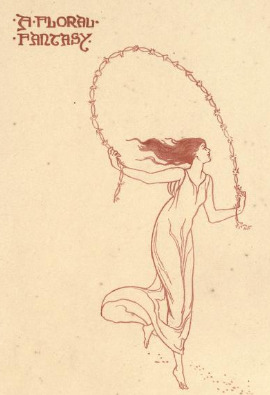
A floral fantasy in an old English garden by Walter Crane
#archive.org#illustration#book#a floral fantasy#flowers#flowercore#fairy poetry#fairycore#fairies#1899#gardencore#plantcore
2 notes
·
View notes
Text
the daughter of the moon, born from Datura and Bleeding hearts, arose from her slumber in the early wake of the morn,
she drank the dew from the leaf of which she lay, hoping for something substantial to quench her thirst,
when she finished she let out her final song,
"I am the fire,
I am the air,
I am the wind that blows through my hair,
As dusk ends and dawn begins,
I will blow over my corpse when i'm dead,
I shall hold myself to the ground, in hopes that the fall will cushion the sorrow in my head"
- N
#original poem#poetry#shitty poetry#poem#art#lol#does poetry count as art#this is not my best work#virginia woolf#symbolism#sylvia plath#fairy poetry#emily dickinson#poets on tumblr#poetic
1 note
·
View note
Photo
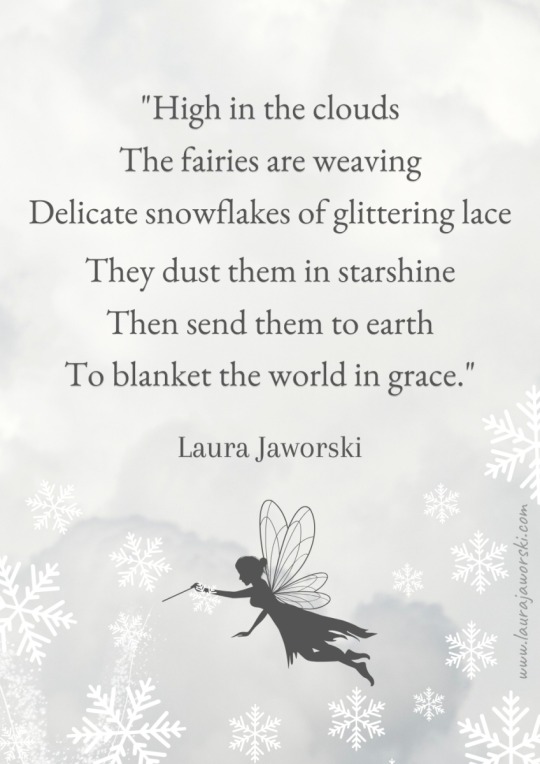
(via Winter Fairies)
"High in the clouds
The fairies are weaving
Delicate snowflakes of glittering lace
They dust them in starshine
Then send them to earth
To blanket the world in grace."
Laura Jaworski
#fairies#winter#poem#poetry#children's poem#children's poetry#fairy poem#fairy poetry#winter poem#snow poem#laura jaworski#laura jaworski poetry#writing#nature#namaste
1 note
·
View note
Text
Fairy
I used to believe in faires
Ones with pretty little dresses and translucent wings
Pixies and seelies and brownies and dryads
I was so sure that they were out there
What if they did exist
Would they steal my name, my skin
Make me dance until I was only a skelton
If I ate their food, could I ever leave
If one would ask me who I am
And I said who I was
What would happen
Would I know myself
And if I stepped into their circle
Made of leaves and flowers and mushrooms
Would they take me away
To their fairy court
A place with dances and royals and beauty
Where every night I would celebrate until I would pass out
Only to wake the next day to do it all again
And would my beauty even fade
Because fairies could be fallen angels
Or a combination of heaven and hell
And mortal’s are not
They are temporary
Am I temporary
If fairies existed
Would I be the same
Or would I change
#original poem#poem#poetry#fairy aesthetic#fairy poetry#this makes no sense#writing#shoutout to my english teacher#ms. T let me write this in class
1 note
·
View note
Text

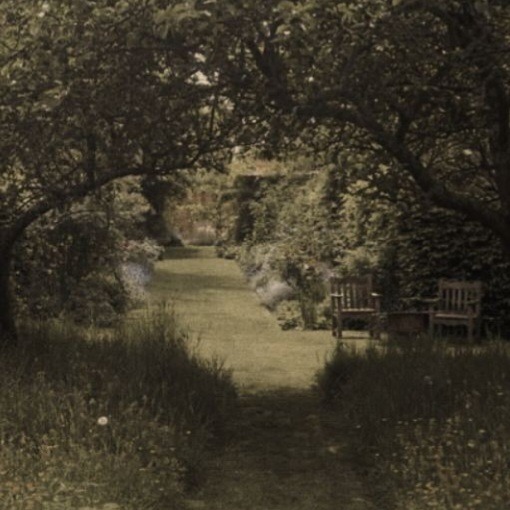





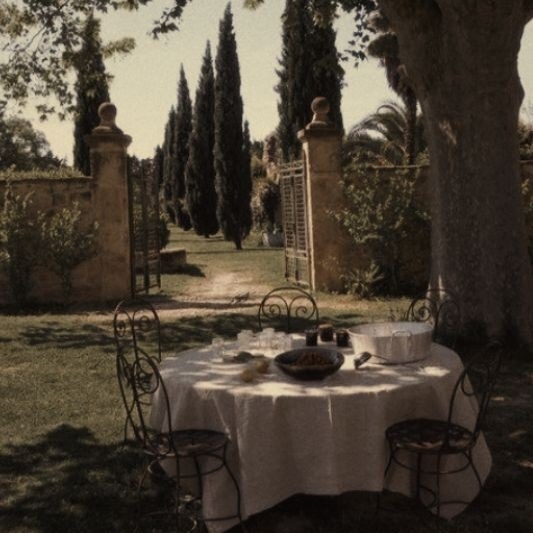

"And then, I have nature and art and poetry, and if that is not enough, what is enough?"
-Vincent van Gogh
#dark academia#dark acadamia aesthetic#light academia#light acadamia aesthetic#classic academia#quotes#romantic aesthetic#book quotes#poetry#books & libraries#academia moodboard#art academia#academia#chaotic academic aesthetic#dark acadamia quotes#dark academia aesthetic#dark academia moodboard#green academia#light academia quotes#light academia aesthetic#light academia poetry#light academia moodboard#cottagecore poems#dark cottagecore#cottagecore#fairy aesthetic#vincent van gogh#van gogh#royalcore moodboard#royalcore
5K notes
·
View notes
Text

#girlblogging#aesthetic#grunge#vintage#trippy#hippie#witch#female hysteria#dead#pale#cottageblr#fashion#kurt cobain#nirvana#90s aesthetic#fairy aesthetic#90s icons#poetry
18K notes
·
View notes
Text

La Belle Dame sans Merci by Paul Julien Meylan
#paul julien meylan#paul meylan#art#la belle dame sans merci#knight#knights#fairy#fairies#poem#john keats#english#england#femme fatale#medieval#middle ages#europe#european#mythology#poetry#mediaeval#tragedy#armour#chivalry#love#romance#tragedies#arthurian
2K notes
·
View notes
Text
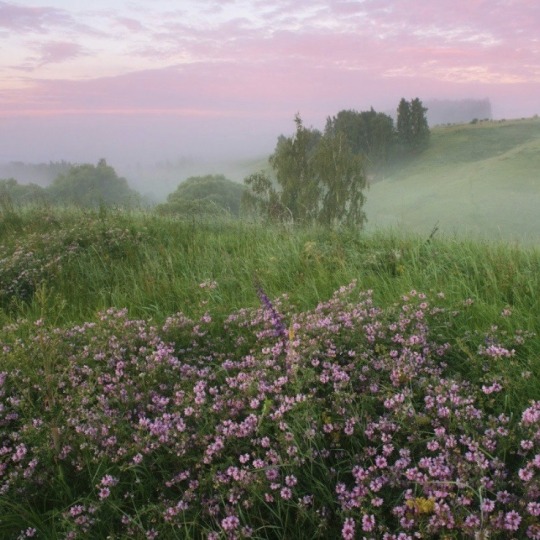
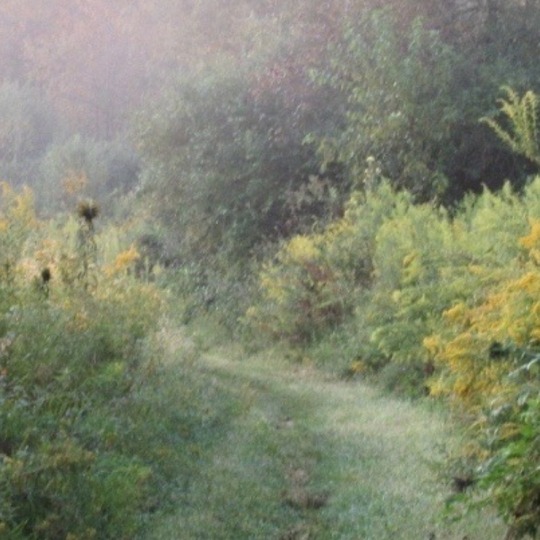



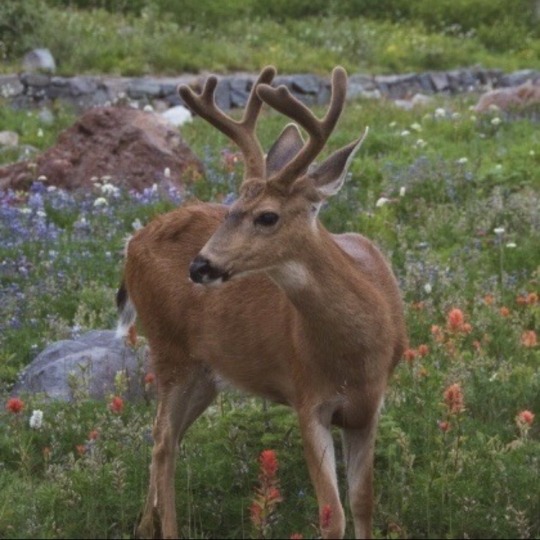
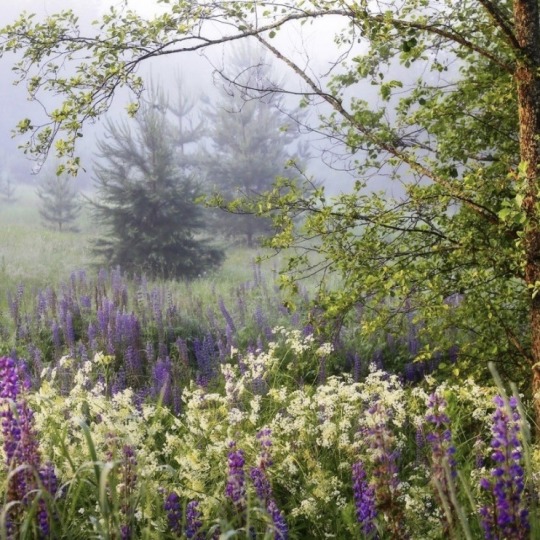
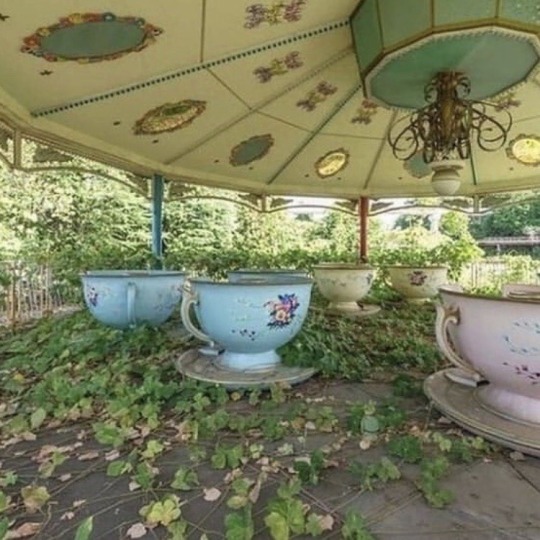

𝑚𝑦𝑠𝑡𝑖𝑐𝑎𝑙 𝑓𝑜𝑟𝑒𝑠𝑡 𝑣𝑖𝑏𝑒𝑠 ⋆ ✬. ✩
#I often come back to these pics cus I just love ‘em so much#they tell a note by themselves but poetry with each other <3#cottagecore#nature#naturecore#flowers#flowercore#warmcore#photography#cozycore#cosycore#fairy#fairycore#forest#forestcore#foggy#deer#animals#abandoned#fairy aesthetic#faecore#misty#fog#moodboard
3K notes
·
View notes
Text

#spring poetry#summer poetry#if you’re gonna swim at least save the birds#poetry#fairy poetry#folktales#fairytale poetry
1 note
·
View note
Text

Charles Baudelaire, from Modern Poets of France: An Anthology; “Hymn to Beauty”
847 notes
·
View notes
Text

Her chariot ready straight is made, Frontispiece from Michael Drayton's Nymphidia, the Court of Faerie by Thomas Maybank (1906)
#thomas maybank#art#illustration#golden age of illustration#1900s#1900s art#vintage art#vintage illustration#vintage#british art#british artist#books#book illustration#poetry#poetry art#fairy#fairies#frontispiece#classic art
2K notes
·
View notes
Text

Ice Sculptures At The Harbin Ice & Snow Festival, China,
Photo By: @nk7
#art#design#architecture#ice#sculpture#china#castle#poetry#ethereal#ephemera#harbin ice & snow festival#fairy tales#nature#fairy aesthetic
1K notes
·
View notes
Text

Forever thankful for my friend
#girlhood#tumblr fyp#aesthetic#dark academia#dark aesthetic#edit#gaslight gatekeep girlboss#girlblogging#nostalgia#fyp#lana del rey#lana del ray aesthetic#mitski#lily rose depp#coquette#weirdcore#whimsicore#whimiscal#nostaligiacore#nostalgic#cottagecore#cottage aesthetic#fairy aesthetic#fairycore#poems and poetry#girlhood is a spectrum#this is girlhood#pinterest#friendship#quotes
722 notes
·
View notes
Photo
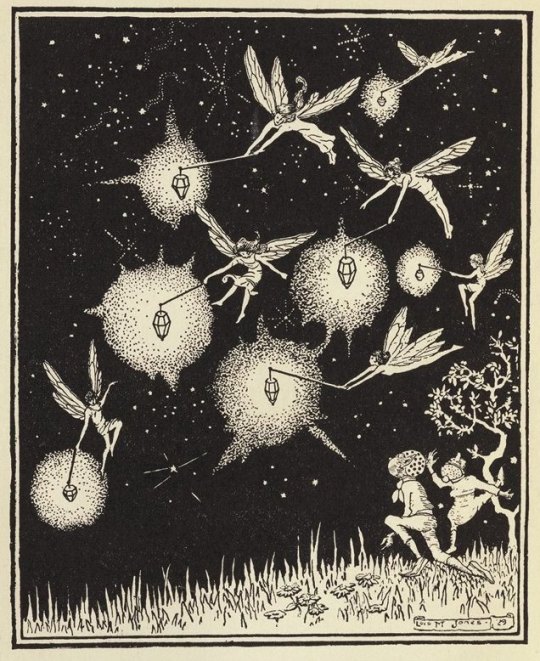
'The Picture Poetry Book' by Lois Mailou Jones, 1935
3K notes
·
View notes